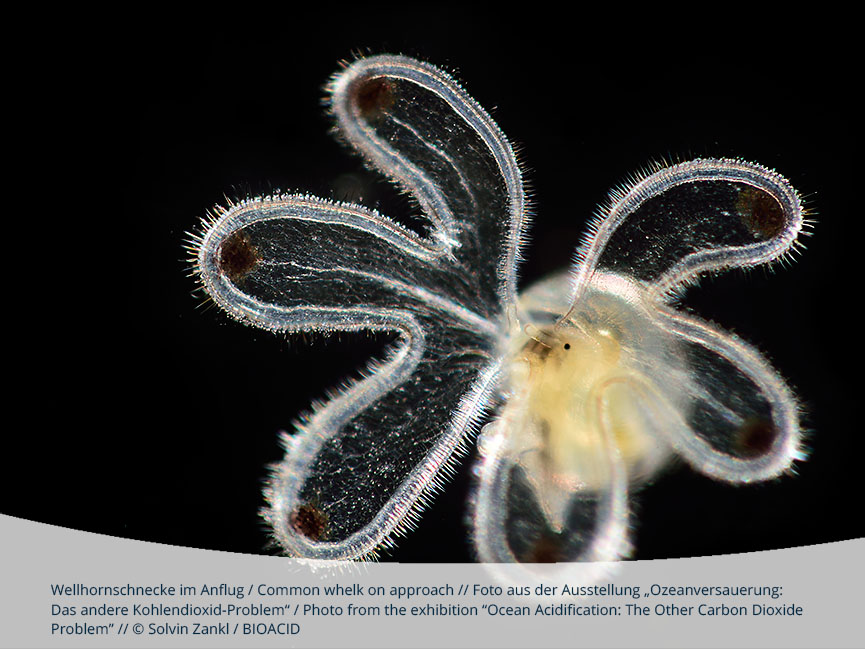At the start of its existence, the common whelk is very unlike its later, lazy life as an adult. Inside the egg, a “veliger larva” – such as this specimen of just one millimetre from the Raunefjord (Norway) – is developing.
After hatching, the larva swims freely through the water, propelled by the velum, an extension that looks like a set of wings and is covered by tiny hairs. Those cilia do not only serve as a motor, but also bring tiny food particles to the organism’s mouth. The snail’s childhood is rather dynamic …
Little is known yet about the effects of ocean acidification on common whelks. But a study that examined snails, mussels and other molluscs suggests that adult snails have difficulties building their shells in more acidified water. Since they are made of aragonite, a form of calcium carbonate, that is easily dissolved, they can be damaged by extreme acidification.
Photo: Solvin Zankl
